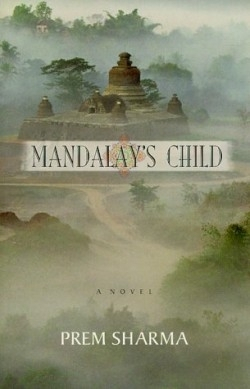
Mandalay's Child
The first of a trilogy, Mandalay’s Child follows the Lal family through the turbulent events of 1941-1947. In 1941, Devi Lal, the patriarch of the family, is a successful physician in Burma. As the eldest son in a Brahmin family in the Punjab, Devi Lal was expected to follow his father’s path as head of the family and chief of his village. Instead, Devi pursued a medical career, causing a rift in his relationship with his father.
Stationed in northern Burma as District Medical Officer, Devi Lal courts and marries Mah Lay, and has two children, Khin May and Hari. Ten years after Hari’s birth, Mah Lay dies. When the story opens, it is 1941, and Devi Lal is at the height of his career. Daughter Khin May has married Tim, an Irish soldier, and has two children, Sophia and Neil. The Japanese have invaded Burma, and the Lal family must escape to India. Along with thousands of refugees, they have applied for permits to travel by the European route, a difficult route meant for Europeans and for the military, but far better than the Asian route, where thousands will die in the mountains and jungles. This portion of the novel is extremely moving, and the reader can not help but think of the current Kosovo refugee situation. Prem Sharma is a skilled storyteller combining suspense, coming-of-age themes and spirituality. Eventually the Lals reach India, and settle in Rawalpindi in the Punjab. Determined to make a new life, the family does reasonably well, albeit in much reduced circumstances.
Here the story begins to focus on Sophia, who is something akin to a holy child, watched over by the nats, the spirits of Mandalay. Sophia
is drawn to the teachings of Gandhi, and grows spiritually, questioning the existing Indian caste system. Sadly, once again history intervenes, this time in the bloody riots of partition. As Muslims and Hindus butcher each other, Sophia experiences great tragedy, but survives through the protection of the nats.
In the tradition of the epic, the story travels to Burma, India, Ireland and England, and covers the first three generations of the Lal family. Although Sharma’s writing is uneven, the narrative is compelling.
Reviewed by
Rebecca Maksel
Disclosure: This article is not an endorsement, but a review. The publisher of this book provided free copies of the book to have their book reviewed by a professional reviewer. No fee was paid by the publisher for this review. Foreword Reviews only recommends books that we love. Foreword Magazine, Inc. is disclosing this in accordance with the Federal Trade Commission’s 16 CFR, Part 255.
